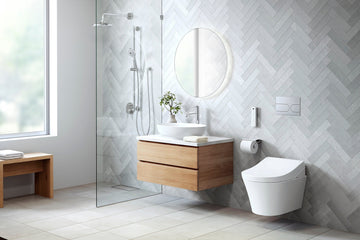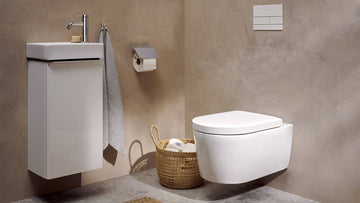In the quest for sustainable solutions, the concept of a circular economy has emerged as a beacon of hope, promising a future where resources are reused, waste is minimized, and environmental impact is reduced. At the heart of this transformation is the realm of toilet innovations, a sector often overlooked but pivotal in the circular economy narrative. This article explores how these innovations are reshaping industries and setting new benchmarks for sustainability.

The Necessity of Circular Economy in Toilets
The traditional linear economic model of 'take, make, dispose' has proven unsustainable, especially in the realm of sanitation. Toilets, a fundamental requirement for human health, are notorious for water consumption and waste generation. Enter the concept of the circular economy, which aims to close the loop by designing out waste and keeping products and materials in use. This approach has sparked a wave of toilet innovations that not only conserve water but also transform waste into valuable resources.
Waterless and composting toilets are at the forefront of these innovations, offering viable alternatives to traditional water-guzzling models. By utilizing advanced technologies, these toilets manage waste efficiently and reduce the strain on water resources. The benefits of waterless toilets extend beyond water conservation, contributing to a significant reduction in sewage treatment needs.
Technologies Driving Toilet Innovations
Several technologies underpin the innovations in toilet systems. Among these, sensor technology plays a crucial role in automating functions, enhancing user experience, and optimizing resource use. Smart toilets equipped with sensors can regulate water usage, ensuring that only the necessary amount is used per flush.
Another groundbreaking innovation is the development of self-cleaning toilets. These toilets use advanced coatings and UV light to maintain hygiene without the need for harsh chemical cleaners. This not only reduces environmental impact but also extends the lifespan of the toilet unit, supporting the circular economy's goals. Insights into these technologies can be further explored in discussions about the future of bathroom technology.
Economic and Environmental Benefits
The shift towards a circular economy in toilet design is not just an environmental imperative but also an economic opportunity. By reducing water and energy consumption, these innovations lower operational costs for both residential and commercial users. Moreover, the potential to recover resources like nutrients and energy from waste opens new revenue streams, enticing businesses to invest in sustainable toilet technologies.
Industries stand to benefit immensely from adopting circular economy toilet innovations. For example, hospitals, which are significant water consumers, can drastically cut costs and enhance sustainability by transitioning to these innovative systems. More on this can be read in the article about toilet innovations for hospitals.
Challenges and the Road Ahead
Despite the promising potential of circular economy solutions in toilets, several challenges hinder widespread adoption. The initial cost of installation and the need for public awareness are significant barriers. Furthermore, regulatory frameworks need to evolve to accommodate and encourage these innovations.
However, with growing awareness and the pressing need for sustainable solutions, the tide is turning. Governments, industries, and consumers are beginning to recognize the long-term benefits of investing in circular economy toilet innovations. The road ahead involves collaborative efforts to refine technologies, reduce costs, and create conducive policies that support sustainable sanitation solutions.
For those interested in further insights into the latest trends in toilet technology, the article on latest toilet innovations provides a comprehensive overview of current advancements.
Conclusion
The integration of circular economy principles into toilet design is revolutionizing how we view sanitation. By closing the loop on waste and resource use, these innovations not only address environmental challenges but also offer economic benefits. As industries continue to embrace these technologies, the vision of a sustainable future becomes increasingly attainable. The journey towards fully realizing the potential of circular economy toilet innovations is underway, promising a cleaner, greener world for future generations.

Frequently Asked Questions
What are circular economy toilet innovations?
Circular economy toilet innovations refer to the development and implementation of toilet systems that aim to minimize waste and optimize resource use by integrating circular economy principles. This includes technologies like waterless or composting toilets, smart sensors, and self-cleaning systems.
How do these innovations impact water conservation?
These innovations significantly impact water conservation by reducing the amount of water required per use. For example, waterless toilets eliminate the need for flushing, whereas smart toilets with sensor technology optimize water usage, making them highly efficient in conserving water.
What are the challenges in adopting circular economy toilet innovations?
The main challenges include high initial costs, lack of public awareness, and the need for supportive regulatory frameworks. Overcoming these barriers requires collaborative efforts from governments, industries, and consumers to promote and invest in sustainable solutions.
This article contains affiliate links. We may earn a commission at no extra cost to you.






